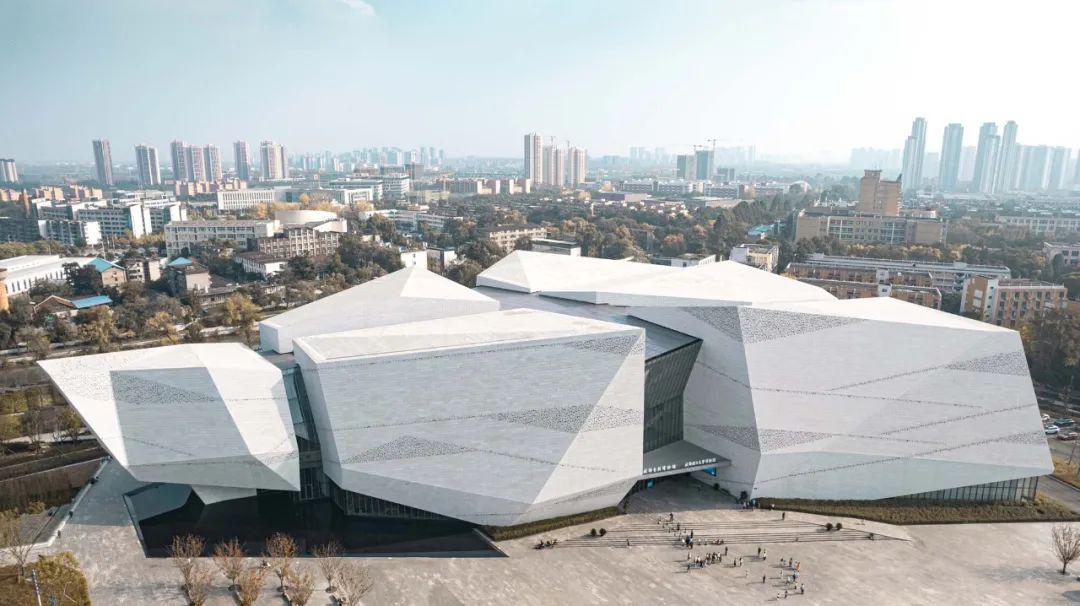成都自然历史博物馆 Pelli Clarke & Partners、中国建筑西南设计研究院 成都自然历史博物馆是一座卓越的科学和文化机构,以其广阔的展品、公共空间、商店、咖啡馆、电影院、最先进的教育设施和翠绿的景观欢迎来自世界各地的游客。邀请聚会和联系。 The Chengdu Natural History Museum is a preeminent institution for science and culture, welcoming visitors from around the world with expansive exhibits, public spaces, shops, a café, a cinema, state-of-the-art educational facilities, and a verdant landscape that invites gathering and connection.
成都自然历史博物馆
Pelli Clarke & Partners、中国建筑西南设计研究院


The Chengdu Natural History Museum is a preeminent institution for science and culture, welcoming visitors from around the world with expansive exhibits, public spaces, shops, a café, a cinema, state-of-the-art educational facilities, and a verdant landscape that invites gathering and connection.



平面图
Recently completed in 2022, the 540,000 sq. ft. (50,000 sq. m.) building is a significant cultural landmark for the city of Chengdu, which is in the midst of an economic boom as a new high-tech and entrepreneurial hub. The museum’s design presents a celebration of Chengdu’s historical legacy and modern ethos, transforming the city’s skyline and symbolizing its energy and innovative spirit.



The project successfully synthesizes the historical culture and context of Chengdu as it delves into the soul of the local elements “Shu Mountain, Shu Road, Shu Water”.

The building massing was inspired by the Sichuan mountain forms created by the shifting of ancient tectonic plates of the Chengdu region. The volumes reflect the rock breaking apart and shifting with the horizontal and vertical forces.

The building forms lift from the ground at certain moments to reveal the public spaces within, at the same time maintaining firm anchor to the earth. The individual mountains, or rock volumes, are realized as distinct exhibit spaces, separated and held together by light-filled public spaces. The narrative of tectonic plates also influenced the selection of materials, in particular the local granite of the exterior facade.


The organically shaped and composed perforations in the stone were devised to create the impression of snow-covered mountains during the day, with LED backlighting reflecting the stars lit at night.





分析示意图



The second most significant inspiration was the mountain roads, the Shu Roads, a system of wood plank roads supported from the sides of cliffs. The Shu Road emerges as the Dino Box, connecting the second level to the third and similarly suspended from the sides of the stone volumes. It was designed to be experienced as an adventure—a sloping, interactive space connecting the second level to the third where visitors can walk amongst the dinosaurs positioned along the path and suspended from the ceiling.



分析示意图
The clefts between the rock forms are transparent and glassy, designed to encourage reflection, observation, and interaction.



剖面图
These in-between spaces are visual and physical connections between the exhibits, and likewise to the city, street, landscape, and the canal.





立面图
水 / 景观 / 蜀水
The existing Dongfeng Canal on the eastern edge of the site is mirrored by a network of waterways and reflecting pools.




The interactive water drape at the north building volume is visible from the street. Building forms are reflected in the shallow pools at the north of the site.


